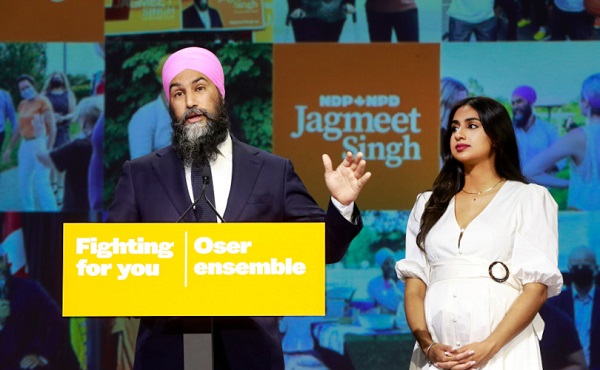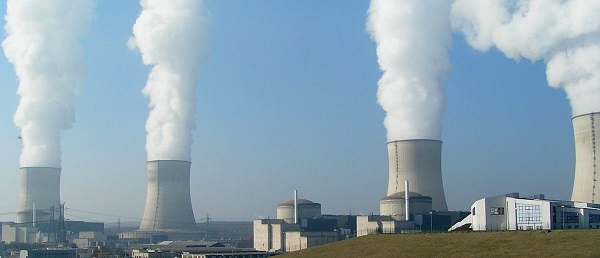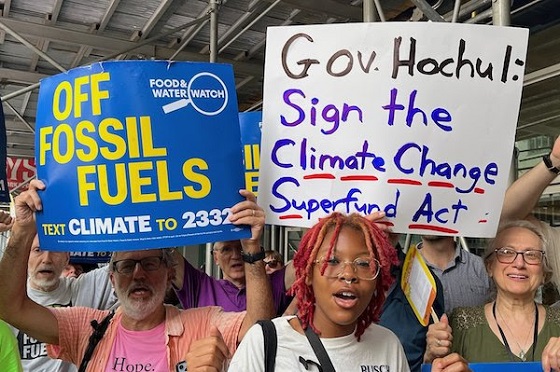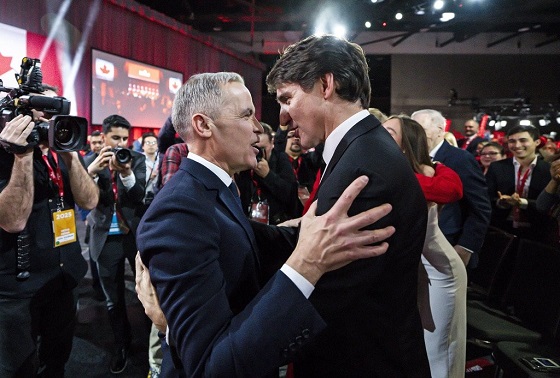Uncategorized
Trump looking at several candidates for chief of staff
WASHINGTON — President Donald Trump is weighing at least four people to serve as his next chief of staff, after plans for an orderly succession for departing John Kelly fell through.
The high-profile hiring search comes at a pivotal time as the president looks to prepare his White House for the twin challenges of securing his re-election and fending off inquiries once Democrats gain control of the House next year.
Trump’s top pick for the job, Nick Ayers, is out of the running and Trump is now soliciting input on at least four individuals, including Office of Management and Budget director Mick Mulvaney and Rep. Mark Meadows, R-N.C., the chair of the conservative House Freedom Caucus.
Ayers, who is chief of staff to
Ayers confirmed the decision in a tweet Sunday, thanking Trump and Pence for giving him the opportunity to work in the White House. “I will be departing at the end of the year but will work with the #MAGA team to advance the cause,” he said.
Trump offered his own take on the development: “I am in the process of interviewing some really great people for the position of White House Chief of Staff. Fake News has been saying with certainty it was Nick Ayers, a spectacular person who will always be with our #MAGA agenda. I will be making a decision soon!”
Even senior White House officials were caught off guard Sunday, most having believed the Ayers move was a done deal. No obvious successor to Kelly was in sight and there was some fretting that Trump may not be able to fill the job by the time Kelly leaves.
Ayers and Trump had discussed the job for months, making the breakdown Sunday all the more surprising. Trump said Saturday that he expected to announce a replacement for Kelly in a day or two. But with Ayers no longer waiting in the wings, Trump may now take until the end of the year, according to a person familiar with the president’s thinking.
Mulvaney was not interested in becoming chief of staff, according to a person close to him who spoke on condition of anonymity. Mulvaney has been saying for almost two months now that he would be more interested in becoming commerce or treasury secretary if that would be helpful to the president, the person said.
Also among those thought to be in the mix were Treasury Secretary Steve Mnuchin and U.S. Trade Representative Robert Lighthizer, who said in a CBS interview that he hadn’t spoken to anyone at the White House about the job and was “entirely focused” on his position. A person familiar with Mnuchin’s thinking said he, too, was happy with his work at Treasury and had not sought the job of chief of staff.
Acting Attorney General Matthew Whitaker and Trump’s former deputy campaign manager, David Bossie, were also among the names being floated by some close to the White House.
Trump’s administration has set records for staff turnover, and he has often struggled to attract experienced political professionals, a challenge that has grown more difficult by the upcoming threat of costly Democratic oversight investigations and an uncertain political environment.
In any administration, the role of White House chief of staff is split between the responsibilities of supervising the White House and managing the man sitting in the Oval Office. Striking that balance in the turbulent times of Trump has bedeviled both Kelly and his predecessor, Reince Priebus, and will be the defining challenge for whomever is selected next.
Kelly, whose last day on the job is set to be Jan. 2, had been credited with imposing order on a chaotic West Wing after his arrival in June 2017 from his post as homeland security secretary. But his iron fist also alienated some longtime Trump allies, and over time he grew increasingly isolated.
Trump wants his next chief of staff to hold the job through the 2020 election, the officials said. Ayers, who has young triplets, had long planned to leave the administration at the end of the year and had only agreed to serve in an interim basis through next spring.
Ayers had earned the backing of the president’s influential daughter and son-in-law, White House advisers Ivanka Trump and Jared Kushner, but was viewed warily by other aides.
Ayers will run a pro-Trump super PAC, according to a person familiar with his plans who was not authorized to discuss them by name.
Pence’s deputy chief of staff, Jarrod Agen, is expected to assume Ayers’ role for the
___
Follow Miller on Twitter at https://twitter.com/ZekeJMiller
Zeke Miller, Jill Colvin And Catherine Lucey, The Associated Press
Uncategorized
CNN’s Shock Climate Polling Data Reinforces Trump’s Energy Agenda


From the Daily Caller News Foundation
As the Trump administration and Republican-controlled Congress move aggressively to roll back the climate alarm-driven energy policies of the Biden presidency, proponents of climate change theory have ramped up their scare tactics in hopes of shifting public opinion in their favor.
But CNN’s energetic polling analyst, the irrepressible Harry Enten, says those tactics aren’t working. Indeed, Enten points out the climate alarm messaging which has permeated every nook and cranny of American society for at least 25 years now has failed to move the public opinion needle even a smidgen since 2000.
Appearing on the cable channel’s “CNN News Central” program with host John Berman Thursday, Enten cited polling data showing that just 40% of U.S. citizens are “afraid” of climate change. That is the same percentage who gave a similar answer in 2000.
Dear Readers:
As a nonprofit, we are dependent on the generosity of our readers.
Please consider making a small donation of any amount here.
Thank you!
Enten’s own report is an example of this fealty. Saying the findings “kind of boggles the mind,” Enten emphasized the fact that, despite all the media hysteria that takes place in the wake of any weather disaster or wildfire, an even lower percentage of Americans are concerned such events might impact them personally.
“In 2006, it was 38%,” Enten says of the percentage who are even “sometimes worried” about being hit by a natural disaster, and adds, “Look at where we are now in 2025. It’s 32%, 38% to 32%. The number’s actually gone down.”
In terms of all adults who worry that a major disaster might hit their own hometown, Enten notes that just 17% admit to such a concern. Even among Democrats, whose party has been the major proponent of climate alarm theory in the U.S., the percentage is a paltry 27%.
While Enten and Berman both appear to be shocked by these findings, they really aren’t surprising. Enten himself notes that climate concerns have never been a driving issue in electoral politics in his conclusion, when Berman points out, “People might think it’s an issue, but clearly not a driving issue when people go to the polls.”
“That’s exactly right,” Enten says, adding, “They may worry about in the abstract, but when it comes to their own lives, they don’t worry.”
This reality of public opinion is a major reason why President Donald Trump and his key cabinet officials have felt free to mount their aggressive push to end any remaining notion that a government-subsidized ‘energy transition’ from oil, gas, and coal to renewables and electric vehicles is happening in the U.S. It is also a big reason why congressional Republicans included language in the One Big Beautiful Bill Act to phase out subsidies for those alternative energy technologies.
It is key to understand that the administration’s reprioritization of energy and climate policies goes well beyond just rolling back the Biden policies. EPA Administrator Lee Zeldin is working on plans to revoke the 2010 endangerment finding related to greenhouse gases which served as the foundation for most of the Obama climate agenda as well.
If that plan can survive the inevitable court challenges, then Trump’s ambitions will only accelerate. Last year’s elimination of the Chevron Deference by the Supreme Court increases the chances of that happening. Ultimately, by the end of 2028, it will be almost as if the Obama and Biden presidencies never happened.
The reality here is that, with such a low percentage of voters expressing concerns about any of this, Trump and congressional Republicans will pay little or no political price for moving in this direction. Thus, unless the polls change radically, the policy direction will remain the same.
David Blackmon is an energy writer and consultant based in Texas. He spent 40 years in the oil and gas business, where he specialized in public policy and communications.
Uncategorized
Kananaskis G7 meeting the right setting for U.S. and Canada to reassert energy ties


Energy security, resilience and affordability have long been protected by a continentally integrated energy sector.
The G7 summit in Kananaskis, Alberta, offers a key platform to reassert how North American energy cooperation has made the U.S. and Canada stronger, according to a joint statement from The Heritage Foundation, the foremost American conservative think tank, and MEI, a pan-Canadian research and educational policy organization.
“Energy cooperation between Canada, Mexico and the United States is vital for the Western World’s energy security,” says Diana Furchtgott-Roth, director of the Center for Energy, Climate and Environment and the Herbert and Joyce Morgan Fellow at the Heritage Foundation, and one of America’s most prominent energy experts. “Both President Trump and Prime Minister Carney share energy as a key priority for their respective administrations.
She added, “The G7 should embrace energy abundance by cooperating and committing to a rapid expansion of energy infrastructure. Members should commit to streamlined permitting, including a one-stop shop permitting and environmental review process, to unleash the capital investment necessary to make energy abundance a reality.”
North America’s energy industry is continentally integrated, benefitting from a blend of U.S. light crude oil and Mexican and Canadian heavy crude oil that keeps the continent’s refineries running smoothly.
Each day, Canada exports 2.8 million barrels of oil to the United States.
These get refined into gasoline, diesel and other higher value-added products that furnish the U.S. market with reliable and affordable energy, as well as exported to other countries, including some 780,000 barrels per day of finished products that get exported to Canada and 1.08 million barrels per day to Mexico.
A similar situation occurs with natural gas, where Canada ships 8.7 billion cubic feet of natural gas per day to the United States through a continental network of pipelines.
This gets consumed by U.S. households, as well as transformed into liquefied natural gas products, of which the United States exports 11.5 billion cubic feet per day, mostly from ports in Louisiana, Texas and Maryland.
“The abundance and complementarity of Canada and the United States’ energy resources have made both nations more prosperous and more secure in their supply,” says Daniel Dufort, president and CEO of the MEI. “Both countries stand to reduce dependence on Chinese and Russian energy by expanding their pipeline networks – the United States to the East and Canada to the West – to supply their European and Asian allies in an increasingly turbulent world.”
Under this scenario, Europe would buy more high-value light oil from the U.S., whose domestic needs would be back-stopped by lower-priced heavy oil imports from Canada, whereas Asia would consume more LNG from Canada, diminishing China and Russia’s economic and strategic leverage over it.
* * *
The MEI is an independent public policy think tank with offices in Montreal, Ottawa, and Calgary. Through its publications, media appearances, and advisory services to policymakers, the MEI stimulates public policy debate and reforms based on sound economics and entrepreneurship.
As the nation’s largest, most broadly supported conservative research and educational institution, The Heritage Foundation has been leading the American conservative movement since our founding in 1973. The Heritage Foundation reaches more than 10 million members, advocates, and concerned Americans every day with information on critical issues facing America.
-

 Bruce Dowbiggin2 days ago
Bruce Dowbiggin2 days agoMic Drop: The Thought Police Are Coming To Take You Away
-

 C2C Journal2 days ago
C2C Journal2 days agoCanada’s Health-Care Monopoly is Killing Us
-

 Crime2 days ago
Crime2 days agoU.S. Missile Strike on Alleged Narco-Boat Tied to Maduro and Ohio Indictment of Chinese Firms Signal Dramatic Escalation in War on Fentanyl
-

 International2 days ago
International2 days agoUS going back to the moon before Trump leaves office
-

 National2 days ago
National2 days agoNDP seemingly learns nothing from electoral collapse as the party sets identity goals for leadership race
-

 International2 days ago
International2 days agoAustralian woman faces $200k penalty for saying men don’t belong in women’s sports
-

 Alberta2 days ago
Alberta2 days agoTeacher strikes should never happen in Alberta
-

 Alberta1 day ago
Alberta1 day agoProminent conservative lawyer in Canada disbarred in ‘vindictive abuse of process’






